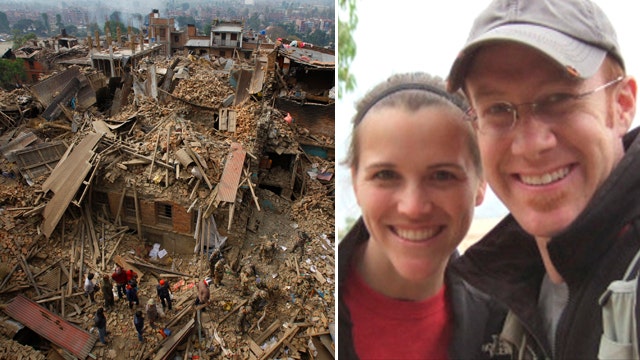American family helps relief effort in Nepal
The Timberlakes working to reunite children separated from their families by devastating earthquake
KATHMANDU, Nepal – Nepal's government urged foreign rescue workers in the quake-hit capital to return home Monday as hundreds of people visited Buddhist shrines and monasteries to mark the birthday of Gautam Buddha.
Information Minister Minendra Rijal said the major rescue work in Kathmandu and surrounding areas have been completed and that the remaining operations can be handled by local workers. However, work remained in the villages and remote mountain areas and foreign aid volunteers could work with local police and army rescuers in those areas, he said.
Since the April 25 earthquake, 4,050 rescue workers from 34 different nations have flown to Nepal to help in rescue operations, provide emergency medical care and distribute food and other necessities. The death toll from the quake, Nepal's worst in more than 80 years, reached 7,276, police said.
At the Swayambhunath shrine, located atop a hill overlooking Kathmandu, hundreds of people chanted prayers as they walked around the hill where the white iconic stupa with its gazing eyes are located.
Some of the structures around the stupa, built in the 5th century, were damaged in the April 25 magnitude 7.8 quake. Police blocked off the steep steps to the top of the shrine, also called "Monkey temple" because of the many monkeys who live on its slopes.
"I am praying for peace for the thousands of people who were killed," said Santa Lama, a 60-year-old woman. "I hope there will be peace and calm in the country once again and the worst is over."
Authorities had to temporarily close Kathmandu's main airport to large aircraft delivering aid due to runaway damage on Sunday, but U.N. officials said the overall logistics situation was improving.
The airport was built to handle only medium-size jetliners, but not the large military and cargo planes that have been flying in aid supplies, food, medicines, and rescue and humanitarian workers, said Birendra Shrestha, the manager of Tribhuwan International Airport.
There have been reports of cracks on the runway and other problems at the only airport capable of handling jetliners.
"You've got one runway, and you've got limited handling facilities, and you've got the ongoing commercial flights," said Jamie McGoldrick, the U.N. coordinator for Nepal. "You put on top of that massive relief items coming in, the search and rescue teams that have clogged up this airport. And I think once they put better systems in place, I think that will get better."
He said the bottlenecks in aid delivery were slowly disappearing, and the Nepalese government eased customs and other bureaucratic hurdles on humanitarian aid following complaints from the U.N.

